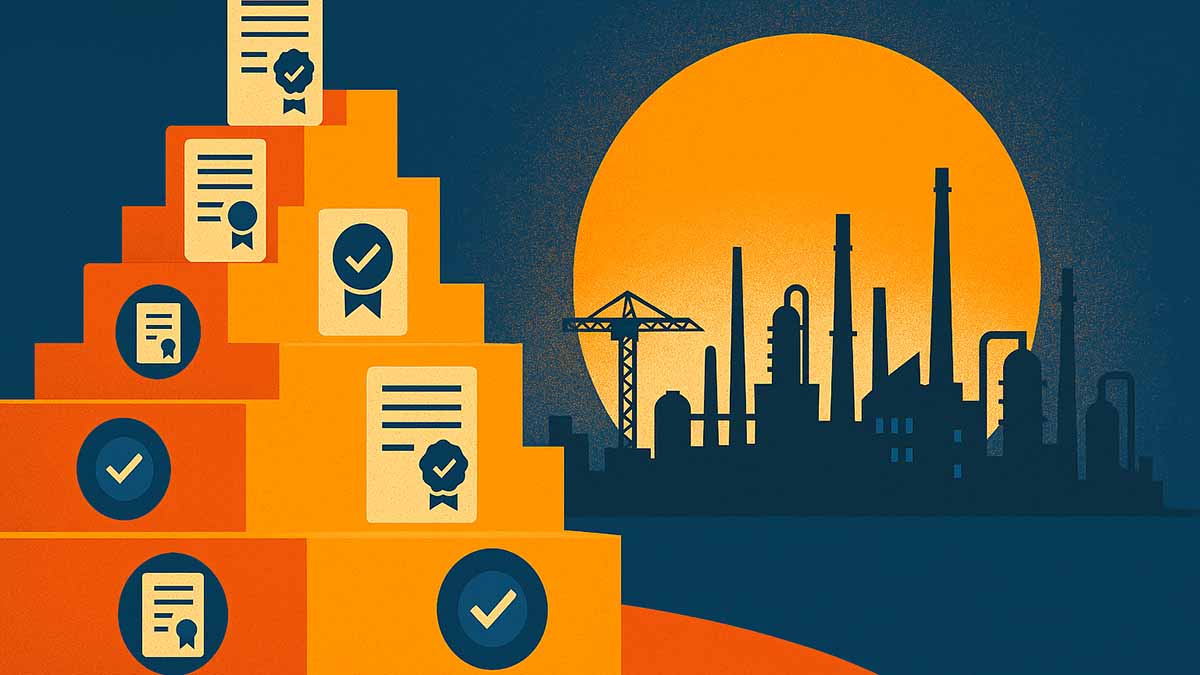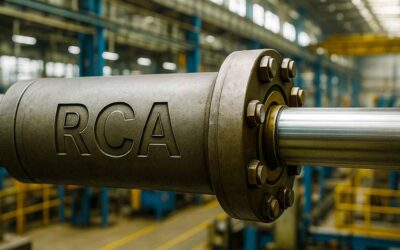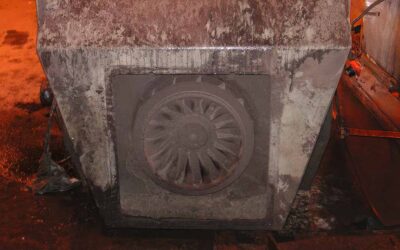In our current work environments marked by rapid adoption of new technologies and increasingly stringent and evolving industry standards and regulations, the contributions of reliability professionals and asset managers are becoming more complex and essential.
Organizations count on these professionals to deliver optimal performance from critical assets, including high asset availability, minimized downtime, and lowest lifecycle costs across all industry sectors.
This is a tall order, and it’s crucial that reliability professionals and asset managers stay up to date with the latest knowledge, tools, and thinking in the field. This typically includes an investment in ongoing education, training, and active work experience.
Role of Reliability Professionals and Asset Managers
Reliability Professionals and Asset Managers are responsible for maximizing the value from assets – such as infrastructure, systems, complex machinery – while balancing costs, risks and performance outcomes. The responsibilities and accountabilities of reliability professionals extend far beyond maintenance and repair activities; they oversee risk management, assess asset criticality, monitor asset performance, and enable alignment with the organizational goals and objectives.
Ultimately, reliability professionals work to optimize productivity, reduce costs, increase equipment availability and uptime, and improve the overall value from assets, which is critical to the success of any organization.

The importance of these professional roles is significant in industry sectors where equipment failure can lead to catastrophic health, safety, environmental, and economic outcomes. Reliability professionals use techniques such as predictive analytics, asset condition monitoring, and failure analysis to proactively address issues before they result in costly downtime.
Similarly, asset managers use strategies such as asset lifecycle management to ensure that assets are operated at peak efficiency, with decisions for replacement, upgrades, or repurposing made on a timely basis with input from various business functional specialists.
The Need for Technical Certification
As technology and methodologies evolve, the need for continuous learning and professional development in reliability, maintenance, and asset management becomes increasingly apparent.
Qualifications such as completion of courses, a program of study, or similar formal study (e.g., Engineering degrees, Engineering Technologist diplomas, Skilled Trades education, Business degrees, etc.) signify that the recipient has completed a measure of tested knowledge at a specific point in time. Qualifications do not expire.
Certification takes this one step further by expecting ongoing continuous professional development (CPD) to demonstrate that the certificant is staying current and up-to-date with the latest thinking and leading practices in the fields of reliability, maintenance and asset management. Certifications have an expiry date.
Technical certification, such as those offered by national or regional not-for-profit professional associations, provides a standardized way to demonstrate expertise and proficiency in the field. These certifications offer significant benefits for both individuals and organizations.
WIIFM – What’s in It for Me? Enhanced Credibility and Career Advancement
For individuals, technical certifications serve as a mark of credibility, demonstrating that they have the necessary competency – tested knowledge, applied skills, and work experience – to excel in their roles. Whether you are just entering your chosen field or are an experienced professional, certifications can enhance your career prospects.
Employers often look for certified individuals to ensure that their teams will be equipped to handle complex challenges; professionals with these credentials tend to see more career advancement opportunities. This is true whether it is maintaining a Professional Engineering certification, a specific reliability, maintenance, asset management certification, or other focused technical certification.
Certifications can provide a structured career path for advancement and a standardized level of expertise, particularly when they follow national or international professional certification schemes.
The competency requirements to advance from one certification level to the next are objectively specified. Obtaining advanced levels lets employers know whether an individual has year one of experience ten times or ten years of progressive experience.
In addition, certification often signals a commitment to personal and professional growth, building confidence through achievement.
Certification signals more than knowledge—it proves commitment to growth.
Employers value individuals who are dedicated to staying current with leading practices and technological innovations. Certifications are a tangible way to demonstrate an individual’s commitment to staying current.
WIIFO – What’s in it for Organizations? Improved Organizational Performance
For organizations, hiring certified individuals can directly impact overall operational performance. Whether organizations hire a new employee or contractor, engage a consultant, or have an independent auditor evaluate their business practices, companies want to have confidence that the person they rely on to provide business deliverables or recommendations is current and up-to-date with their knowledge and skills.
Many hundreds of thousands or millions of dollars are riding on the outcomes of decisions and recommendations – companies need confidence that they are getting the best advice possible based on the latest thinking.
Yesterday’s excellence is today’s standard and tomorrow’s mediocrity.
The expression ‘yesterday’s excellence is today’s standard and tomorrow’s mediocrity’ comes to mind. If the finish line keeps moving, organizational competitive advantage comes from meeting today’s performance requirements and striving for the future finish line.
Employees also want to work for organizations that will support their career aspirations. This means that organizations that invest in training and certification tend to excel at efforts to recruit, develop, and retain valuable and competent top-talent employees.
The expressed fear of ‘what if we train them and they leave?’ has a corollary of ‘what if we don’t and they stay?’. An enormous expense goes into recruiting and onboarding a new employee – the goal should be to retain employees and enable them to contribute to your organization for many years to come.
Employees with up-to-date certifications typically bring fresh perspectives to the organization. By being exposed to new tools, technologies, techniques, and ideas, they can contribute innovative solutions to existing challenges and opportunities, leading to greater efficiency and competitiveness.
Organizations that prioritize certification programs also signal to their clients and stakeholders that they are committed to maintaining high standards for quality and reliability. This creates a competitive advantage, enhancing reputation and customer trust.
Continuous Professional Development (CPD) – Accessing the Latest Knowledge and Leading Practices
Reliability professionals and asset managers face a wide range of challenges and opportunities as they manage the lifecycle of assets. Many industry sectors are also seeing substantial updates to their regulatory compliance requirements and stakeholder expectations, including improvements in health and safety, process safety, and environmental practices, as well as increasing product quality and production volume demands.

Across all industry sectors, new tools, technologies, and techniques are constantly evolving and build on a solid technical foundation. Staying current with these technological advances is no longer an option – it’s a necessity.
If the finish line keeps moving, staying current isn’t optional—it’s survival.
Organizations must ensure that their teams are well-versed in these changes and can work to comply with any new regulations while reducing operational inefficiencies.
Certifications typically reflect the latest standards and regulations and demand that certified individuals demonstrate ongoing continuous professional development (CPD), indicating they stay current. CPD may take the form of formal or informal learning through courses, webinars, and articles, application of this new learning in the workplace, contributions to developing new standards or regulations, mentoring of earlier career professionals, etc.
Meeting the standards of CPD for certification gives both individual professionals and the organizations they work for the confidence that they are meeting or exceeding industry requirements.
Certifications as a Strategic Imperative for Long-Term Success
In the ever-evolving professional fields of reliability, maintenance, and asset management, the importance of technical certification and staying up-to-date with the latest industry knowledge, thinking, and leading practices cannot be overstated.
For individual reliability professionals and asset managers, certification enhances their individual credibility and career prospects and provides access to the latest tools, technologies and leading practices. Organizations that employ certified individuals as employees, contractors, consultants, and auditors benefit from improved asset performance, value delivery, and a competitive edge in the marketplace.
The rapid pace of technological advancement, new and updated global standards and regulatory requirements, and an ever-shifting finish line mean that lifelong learning is a key to long-term success.
As industry sectors continue to evolve, professionals and organizations that invest in continuous professional development and certifications will be best positioned to navigate the complexities of modern asset management and drive sustainable results.











